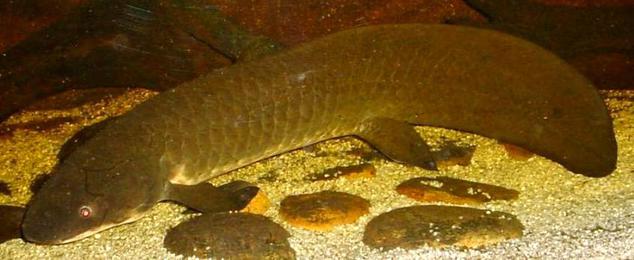Variations of this dynamic geometry appear elsewhere in nature, exhibiting a variety of mechanisms and structures and inspiring development in artificial muscle technology.
Spider silk, specifically Ornithoctonus Huwena spider silk, now offers the newest such inspiration thanks to research from a collaboration of scientists in China and the U.S., the results of which are published today in Applied Physics Letters, from AIP Publishing.
 |
| Credit: British Tarantula Society |
"Spider silk is a natural biological material with high sensitivity to water, which inspires us to study about the interaction between spider silk and water," said Hongwei Zhu, a professor in Tsinghua University's School of Material Science and Engineering in Beijing and part of the collaboration. "Ornithoctonus Huwena spider is a unique species as it can be bred artificially and it spins silk of nanoscale diameter."
Besides the shrink-stretch ability of muscles, the way in which the motion is triggered -- how the muscle is actuated -- is a key part of its functionality. These spider silk fibers, actuated by water droplets, showed impressive behavior in all the ways that matter to muscle performance (or to super heroes that may need them to swing from buildings).
"In this work, we reveal the 'shrink-stretch' behavior of the Ornithoctonus Huwena spider silk fibers actuated by water, and successfully apply it on weight lifting," said Zhu. "The whole process can cover a long distance with a fast speed and high efficiency, and further be rationalized through an analysis of the system's mechanical energy."
The research team looked at the actuation process in a few different scenarios, capturing the macro dynamics of the flexing fibers with high speed imaging. They actuated bare fibers on a flat surface (a microscope slide) and while dangling from a fixed point (held with tweezers) before adding a weight to the dangling configuration to test its lifting abilities.
Zhu and his group also investigated the micro structure of the proteins that make up the fibers, revealing the protein infrastructure that leads to its hydro-reflexive action.
Electron microscopy gave a clear picture of the smooth inner threads that make up the fibrous structure, and a laser-driven technique, called Raman spectroscopy, revealed the precise conformation of the protein folding structures making up each layer. Fundamentally, the specific molecular configurations, in this case having proteins that have a strong affinity for water and that rearrange in the presence of water, give rise to the spider silk's actuation.
"Alpha-helices and beta-sheets are two types of secondary protein folding structures in spider silk proteins," said Zhu. "Beta-sheets act as crosslinks between protein molecules, which are thought relevant to the tensile strength of spider silk. A-helices are polypeptide chains folded into a coiled structure, which are thought relevant to the extensibility and elasticity in spider silk protein."
Returning the fiber back to its relaxed state (as one-use muscles are far less useful) requires only removing the water, which offers conservation along with its simplicity. With some fine tuning, there is also potential for designing the precise behavior of the shrink-stretch cycle.
"In addition, as the falling water droplet can be collected and recycled, the lifting process is energy-saving and environmentally friendly," said Zhu. "This has provided the possibility that the spider silk can act as biomimetic muscle to fetch something with low energy cost. It can be further improved to complete staged shrink-stretch behavior by designing the silk fiber's thickness and controlling droplet's volume."
Understanding this remarkable material offers new insight for developing any of a number of drivable, flexible devices in the future.
Other articles on the same theme:
Story source:
The above post is reprinted from materials provided by Sciencedaily . Note: Materials may be edited for content and length.


































